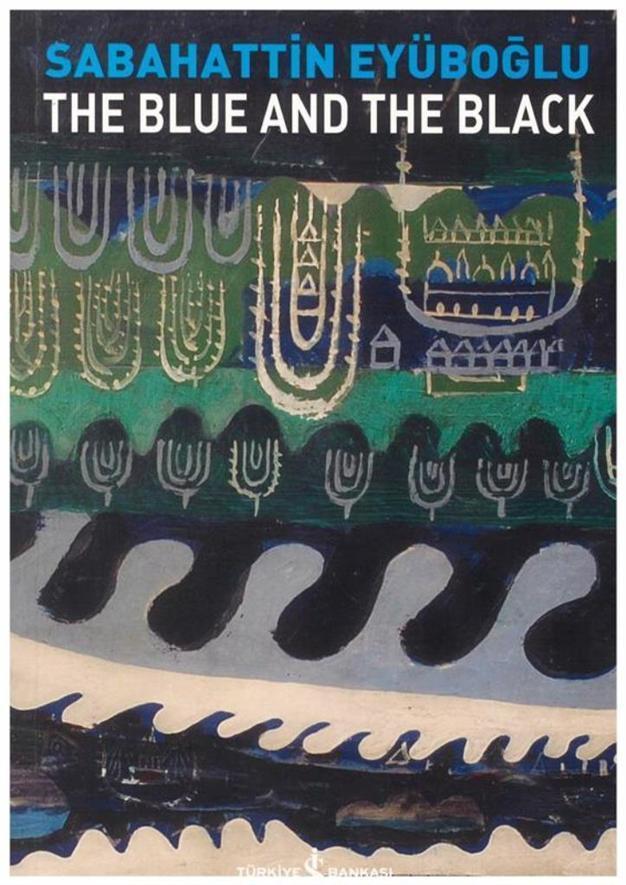‘The Blue and the Black’ by Sabahattin Eyüboğlu
William Armstrong - william.armstrong@hdn.com.tr
 ‘The Blue and the Black’ by Sabahattin Eyüboğlu, translated by Hughette Eyüboğlu and Lyne Saka (Türkiye İş Bankası Kültür Yayınları, 2008, 10TL, pp 198)
‘The Blue and the Black’ by Sabahattin Eyüboğlu, translated by Hughette Eyüboğlu and Lyne Saka (Türkiye İş Bankası Kültür Yayınları, 2008, 10TL, pp 198)Sabahattin Eyüboğlu (1908-1973) is one of the significant but little remembered figures who shaped education policy in the early Turkish Republic. He worked at the Education Ministry until 1947, and was responsible for translating some of the masterpieces of western literature into Turkish. The essays gathered in this modest collection are taken from across his active years of public service, and give the reader a general flavor of his intellectual and professional concerns. They are of little contemporary relevance, but Eyüboğlu is still quite an intriguing character for those interested in the footnotes of the period.
Throughout the essays, he demonstrates a consistent and fairly orthodox republican worldview, but there are two original areas of his thought that are worth noting. Firstly, he was involved with the Village Institutes as a founder and then as an assistant, and remained an enthusiastic champion of them throughout his life. The Institutes were a cornerstone of the early republic’s rural development and educational reforms, aiming to lead to a kind of “rural enlightenment.” They were established to give young teachers of both sexes practical and theoretical knowledge, with graduates expected to return to their villages to inspire modernization. However, they were only open for seven years, closed down in 1946 over fears that they were becoming dangerous nests of communism. Eyüboğlu saw in the Village Institutes an ideal integration of theory and practice, instilling a respect for work and the public spirit that he believed could evolve into a common new religion. Although they were no longer open by the time he came to write most of the essays in “The Blue and the Black,” he spends much of the collection wondering about how the Institutes could be reestablished. “They were business enterprises where each teacher and student acquired the qualities of an enlightened worker, thus implying a realistic and moral vision,” he writes, before idealistically declaring that, “[Village Institutes] transformed pain into joy, weakness into strength, difficulty into pleasure, the teacher into a friend, the blackboard into soil.” For all Eyüboğlu’s enthusiasm, however, the Institutes were not to reopen, marking a professional, intellectual and personal blow to him.
Another of his predilections that failed to really catch on was his rarefied theory of a kind of “Anatolian nationalism.” Equally averse to the trappings of traditional religion and racial pan-Turkism, Eyüboğlu wanted the young Turkish Republic to claim its righteous line of descent from Anatolia’s civilizational heritage. His essays enumerate a generous – though hopelessly unrealistic – desire to instill the country with a greater emotional awareness of the historical civilizations that have marked its land. While praising a contemporary translation of The Iliad into Turkish, he describes his wish for a national culture that could blend old Turkish folk epics with the work of classical Anatolian civilizations:
We never knew how to assimilate the Iliad, Homer, Troy, and Mount Ida for ourselves the way we did with the Ergenekon … [But] the gods traveling through the waters of Anatolia are at home with Anatolian Turkish. Dede Korkut and Homer are hand-in-hand in the breath of the Mediterranean Sea.
Still, a note of despair in the fight against Eyüboğlu’s bête noirs of religious obscurantism and pan-Turkism sometimes bubbles to the surface. “The mosquitoes freely enter our windows. The more we scratch, the more pitiless they are with their bites,” he writes bitterly at one point. As with the Village Institutes that were already being consigned to the history books, he somehow sensed that his cultural battles had already been lost.
Notable recent release
‘The Ottoman-Iranian Borderlands: Making a Boundary, 1843-1914’ by Sabri Ateş
(Cambridge University Press, £64, pp 376)
 ‘The Blue and the Black’ by Sabahattin Eyüboğlu, translated by Hughette Eyüboğlu and Lyne Saka (Türkiye İş Bankası Kültür Yayınları, 2008, 10TL, pp 198)
‘The Blue and the Black’ by Sabahattin Eyüboğlu, translated by Hughette Eyüboğlu and Lyne Saka (Türkiye İş Bankası Kültür Yayınları, 2008, 10TL, pp 198)